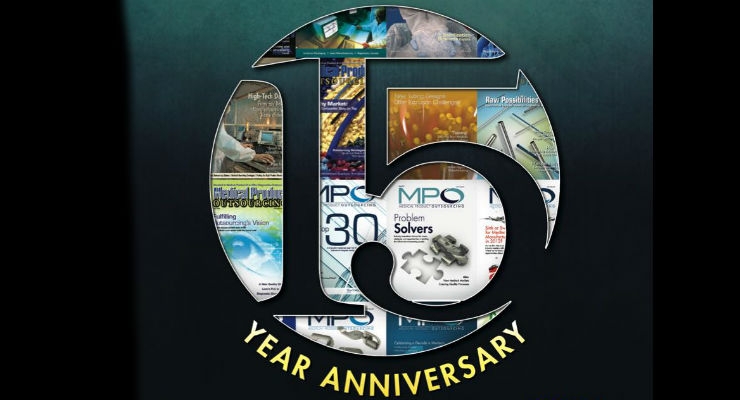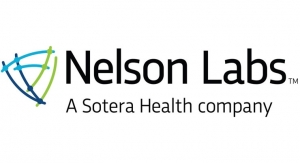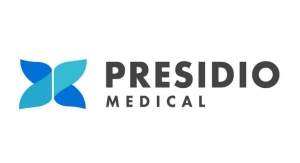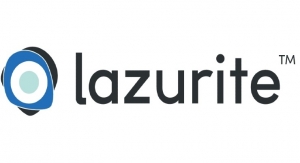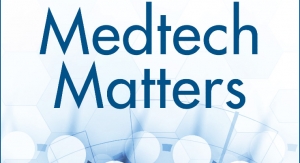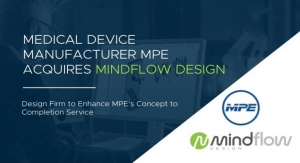Michael Barbella, Managing Editor06.04.18
Father time’s influence on perspective can be fascinating.
Consider the significant turnaround in viewpoints on medtech outsourcing over the past decade and a half. While certainly not a new concept, the practice nevertheless was considered a “trend” 15 years ago as device manufacturers sought to control costs, reduce time to market, and transform their operations into strategic investments.
An April 2003 article in the Minneapolis/St. Paul Business Journal, for example, discussed the growing number of small regional companies capitalizing on the outsourcing movement. The story spoke of a “fundamental shift” at Medtronic plc and other large firms that resulted in those multinational organizations “letting outsourcers concentrate on making products faster and cheaper.”
In the 15 years since that article was published, outsourcing has outgrown its original designation to become a central component of any medtech business strategy (though some still refer to it as a trend). To determine the ways in which the practice has changed during that time (and help MPO commemorate its 15th year of existence), the magazine reached out to members of its Editorial Advisory Board. Their responses provide for a meaningful and sentimental trip down memory lane.
Q: How has medical device outsourcing changed over the last 15 years?
Geary A. Havran, President, NDH Medical Inc.
The last fifteen years have seen very interesting developments in the outsourcing of medical device manufacturing. Some saw a trend toward offshoring and mistakenly used outsourcing and offshoring interchangeably. Then the industry saw near shoring and reshoring. After all said, the one constant has been the growth of contract manufacturing as more and more traditional medical device firms focused their resources on R&D and marketing/sales at the expense of manufacturing and its attendant capital investment. Contract manufacturers have become the source of manufacturing and quality system expertise. Involved early in the process, they contribute to the development process and provide design for manufacturability guidance.
The contract manufacturing space has matured and witnessed considerable merger and acquisition activity leading to “one stop” shops, contrasted with the niche companies with very specialized expertise often not found elsewhere.
Where the next fifteen years take us is anyone’s guess, but it would be hard to see a reversal in the trend of continued growth of medical device outsourcing.
J. Mark King, President & CEO, Tegra Medical
Quality has always been a priority in medtech, but we are observing that contract manufacturers are handling a larger share of the work to adhere to regulatory requirements than they did 15 years ago. Industry trends have evolved so that the validation work is more commonly part of the entire manufacturing process, which as we know is outsourced more and more these days. In instances where previously contract manufacturers validated just the most critical processes and dimensions, they are now apt to find themselves needing more in-depth validation processes such as PPAP. This seems to be the case whether it’s for a new product or just the transfer of an existing product to a new manufacturer. Naturally, these efforts increase the amount of time it takes to launch production of a product—sometimes even more than a year. And, as you would expect, it drives up the cost of getting products to market.
Steve Maylish, Chief Commercial Officer, Fusion Biotec
In 2003, I had recently switched from working with Fortune 100 medical companies to a contract engineering firm called Aubrey Group. At the time, many companies struggled with what to outsource and what to keep in house. Today, many startups outsource all of their engineering or keep a small engineering team. The idea of core competence has changed over the years. Fifteen years ago, companies looked at much of their business (intellectual property, engineering, operations, sales & marketing) as their core competence.
About six years ago, a startup asked our design firm to develop a dermatology device. Later the company decided to launch it as an over-the-counter device. Sales took off. We were manufacturing the device in the U.S. and our client asked us to find a less expensive manufacturer overseas, because of the increased volume. We identified a manufacturer in China and the cost was reduced quite a bit. Later the company was acquired and talking with the CEO afterwards, I asked him how many employees his company had at its peak. The answer was 5.5 employees. They were truly a virtual company! Now, I get contacted by diagnostic companies that would like the chemistry, cartridge, and instrument outsourced, along with manufacturing, regulatory, intellectual property, etc.
Susan Mucha, President, Powell-Mucha Consulting Inc.
I see two major changes. First, the medical device manufacturing community appears to have a much higher level of trust in the contract manufacturing community. I did a survey about 10 years ago among device manufacturers that suggested such a low level of trust in some relationships with electronics manufacturing service (EMS) providers, that many of the cost benefits of outsourcing that other industries were enjoying weren’t being realized. I don’t see that now. Second, systems technology has evolved and deployed enough that it is relatively easy to automate device history recordkeeping and associated data collection. The latest revision of ISO 13485 is helping to drive a stronger focus on risk assessment and associated preventative measures. I think the thought process that ISO 13485:2016 (and the revisions of ISO 9001 and IATF 16949) are driving combined with systems capabilities now resident in many contract manufacturers is going to result in a more robust manufacturing process than anyone would have imagined and was possible 15 years ago.
Jeffery R. Nelson, M.B.A. SM(NRCM), President, Nelson Laboratories LLC
The last fifteen years have brought significant change to the medical device outsourcing industry. In my opinion, some of the most significant changes include:
Bryce G. Rutter, Ph.D., Founder & CEO, Metaphase Design Group Inc.
The design and development of medical devices has grown increasingly more complex over the last decade as a wide variety of new and novel materials and alternative manufacturing processes have changed how manufacturers bring products to market. On the development side, there has been an increase in the use of contract manufacturers who specialize in the production of high-tech materials and in real-time flexible manufacturing processes. Both enable easier customization and cost-effective integration of advanced technologies. In addition, more companies are outsourcing the design of medical devices to professionals who have a very concentrated and robust background in industrial design that is backed by human factors engineering research. Outsourcing the research and design to proven professionals can yield more financial benefits to the OEMs than trying to assemble that expertise on staff.
Dave Sheppard, CM&AA, COO & Principal, MedWorld Advisors
Strategically, much has changed. In 2003, there was little question that strategically U.S. companies needed to develop offshore manufacturing and the offshore supply chain to support it. For those companies that remained in the U.S., it was clear that these companies would need to strategically update their supply chain with offshore sources to remain competitive. And while Mexico was a popular manufacturing destination, it became clear that China was an even better location for low-cost sourcing. In 2018, there is a trend towards regionalization of manufacturing and the supply chain (i.e., manufacture in North America for the N.A. market; China for the Asia market, etc). Having a global strategy with local action is key to successful OEM manufacturing and sourcing in today’s market.
Q: What’s the most significant change in medtech in the last 15 years?
Mark Leahey, President & CEO, MDMA
As the challenges facing the healthcare delivery system continue to grow in complexity, medical technology innovation has been at the forefront in providing solutions. With the increases in life expectancy and growing global populations, there has been a corresponding increase in the number of cures and therapies that are available. While there are many hurdles that the medtech ecosystem overcomes as they develop these solutions, I have been amazed at the collaboration over the years that many stakeholders have engaged in. When I first began working with medical device manufacturers over 18 years ago, it often seemed that various stakeholders were siloed. It has been fascinating to watch how over the past 15 years innovators, regulators, physicians, patients, insurers, and more have worked in a collaborative manner to achieve our shared goal of improving patient outcomes. There is still much work to be done, but I am confident that over the next 15 years our industry will continue to deliver on the promise of a better tomorrow for patients and providers.
Brent Noblitt, Senior Partner, Noblitt & Rueland
One of the most significant changes in medtech in the last 15 years has been in the regulatory sphere. Globalization and growing harmonization of regulations were not thought to be very likely 15 years ago. In the past the U.S. FDA was quite U.S. centered in their quest to protect U.S. citizens. In the past fifteen years we have seen several programs implemented in which the FDA has attempted to become more harmonized with the international medtech community. For example, we have seen FDA accept ISO 13485 audit reports in lieu of FDA inspections in some instances. In addition, the Medical Device Single Audit Program (MDSAP) is now being implemented with the U.S., Canada, Brazil, Australia, and Japan all taking part. Very recently the FDA commissioner, Scott Gottlieb, made comments in a blog post that FDA will be proposing a new regulation to harmonize the Quality System regulations with the ISO standard so the manufacturers can more efficiently sell products globally. Harmonization is a work in progress, but the last 15 years have created programs and inertia that hopefully will be very beneficial to medical device manufacturers in the future.
Chris Oleksy, Founder and CEO, Oleksy Enterprises and Next Life Medical; CEO, Emergent Respiratory
The most significant change in medtech over the past 15 years by far is Obamacare and the “fallout”from it. The ramifications to the entire care chain have been dramatic. And, from my lenses, not in a good way. Everyone from emergency responders to “supplier’s suppliers” have been affected in ways that will not be fully “understood” for another 20-50 years. Due to the focus on cost vs. care, the entire care chain has had to reconfigure or align themselves in ways like never before with the ultimate focus being cost minimization, not improved care. A simple gauge of this is the amount of new players entering the space whose operating DNA is founded on cost minimization, not patient care. Another gauge is the largest OEMs within the space spending more time, effort, and money on consolidations to create financial leverage (cost minimization), than on innovation and new products to help society. Just look at their quarterly result communications! I miss the Earl Bakken and Paul Zoll days when the patient was the “True North” of the industry.
Dave Sheppard, CM&AA, COO & Principal, MedWorld Advisors
The impact of value pricing motivated by the changes in insurance reimbursement has to be the most significant change. It has had a dramatic impact on innovation, pricing, reimbursements, market adoption, etc. It used to be that a medtech company could introduce an innovative new product and gain market adoption through getting a few key clinicians to try it within a hospital. Once accepted by a few, then the product had an opportunity to expand utilization in that hospital. Now, a new product has to go through full committee review to even have a trial period in most hospitals. These reviews evaluate pricing, economic benefits, impacts on hospital protocols, etc. It’s made it more difficult for a smaller company to introduce new products in the market and giving larger companies the upper hand on controlling the channel. Even if they don’t innovate as effectively, large strategic companies often have benefit by having smaller companies bring their innovation to them!
Thomas Taylor, President and CEO, Foxx Life Sciences
Regulatory requirements and product testing requirements both continue to get more difficult. The changing regulatory environment in U.S.A., Europe, and Asia continue to add an extra dimension of challenge for launching products globally and slowing the overall process down. Despite the time to market improvements with the product development cycle, 3D printing and advances in software, the process to launch a medtech product worldwide has become extremely difficult because of the different regulatory requirements by region. Europe is currently going through more changes with their requirements that just adds to the confusion and delays with a typical product launch. Overall, we need more global standards and this should be promoted over the next 10 years by major medtech organizations and companies.
Barbara Tischart, VP Marketing and Communications, SMC Ltd.
The medtech market has been rapidly changing over the past 15 years and a key area of change is addressing today’s fast paced data-driven environment. Multiple sources vary in their statement of market size, depending on the level of definition, but estimate growth predictions are at 13 to 26 percent CAGR from 2017 to 2026. Factors in the growth of electronics integration into medical devices range from the need for accuracy of the device performance in the surgical suite to an individual patient’s desire for monitoring their own health. Balancing today’s technology desires with strong industry cost pressures means every feature and benefit needs to be balanced against cost, resulting in a successful value-based solution.
Thomas M. Vassallo, Executive VP, Freudenberg Medical
Change in Healthcare Analytics: Advanced data analysis capabilities moving to replace antiquated systems. As an example, this has allowed patient records to be moved electronically between caregivers and healthcare organizations. The result is improved access to data, providing for improved patient quality of life outcomes within today’s economic constraints.
Private equity investment’s consolidating entrepreneurial philosophies and reinforcing with capital and professional management are leading to innovation and growth.
The decade of computer-assisted surgery is upon us with the progressive exponential growth of Moore’s Law as it applies to data analysis. Algorithm development allows robots to aid and improve surgical outcomes and reduce instances of surgical iatrogenic injuries while decreasing patient “in hospital” days.
Consumerism: The awareness of patients regarding healthcare solution offerings allow them to become a “voting” partner in managing their personal healthcare and their families. The transition can be seen in the medical device companies actively pursuing and implementing direct to patient marketing.
Nikki Willett, Chief Strategy Officer, ComplianceQuest
Although medical device companies have been working closely with their supplier/partners in the past years, there has been an increased focus on collaboration and visibility. Since the pace of business has increased exponentially, businesses must be able to respond to new market demands with agility and innovation. Facing increasing demand for sustainable products and production, companies are relying on their partners more than ever before. And companies aren’t collaborating with partners merely as providers of finished goods or packaging, but as strategic partners that can help create products that are competitive differentiators.
Collaboration is a critical element of a supply chain. Organizations need to work as an integrated network of companies, with access to the same latest information, working toward a shared mission to deliver results and be ahead of their competitors. If one good partner can enable a company to build its brand, expand its reach, and establish its position as a market leader—imagine what’s possible when an organization works collaboratively with the rest of their partners and suppliers. Working with partners/suppliers in increasing speed to market = collaboration + visibility.
Christopher M. Yakacki, Ph.D., Associate Professor, The University of Colorado Denver
The increase in patient-specific devices and procedures has struck me as being one of the most significant changes in medtech over the past 15 years, as well as recently. This is due to the growth over a variety of fields. Medical image segmentation and processing allows engineers to more accurately design around a patient’s anatomy and allow for better surgical planning. Conversely, 3D printing technology keeps evolving at an incredibly rapid pace. 3D-printed devices have been introduced into the marketplace and open new avenues of production. I think we’ll continue to see growth in these areas, which is exciting as they challenge many of the traditional notions of design and manufacturing.
[Author's note: In the June 2018 issue of MPO, this feature was accompanied by two sidebars. They can be read via the following links:
The Human Cyborg, Circa 2033
A Past Glimpse Into the Future]
Consider the significant turnaround in viewpoints on medtech outsourcing over the past decade and a half. While certainly not a new concept, the practice nevertheless was considered a “trend” 15 years ago as device manufacturers sought to control costs, reduce time to market, and transform their operations into strategic investments.
An April 2003 article in the Minneapolis/St. Paul Business Journal, for example, discussed the growing number of small regional companies capitalizing on the outsourcing movement. The story spoke of a “fundamental shift” at Medtronic plc and other large firms that resulted in those multinational organizations “letting outsourcers concentrate on making products faster and cheaper.”
In the 15 years since that article was published, outsourcing has outgrown its original designation to become a central component of any medtech business strategy (though some still refer to it as a trend). To determine the ways in which the practice has changed during that time (and help MPO commemorate its 15th year of existence), the magazine reached out to members of its Editorial Advisory Board. Their responses provide for a meaningful and sentimental trip down memory lane.
Q: How has medical device outsourcing changed over the last 15 years?
Geary A. Havran, President, NDH Medical Inc.
The last fifteen years have seen very interesting developments in the outsourcing of medical device manufacturing. Some saw a trend toward offshoring and mistakenly used outsourcing and offshoring interchangeably. Then the industry saw near shoring and reshoring. After all said, the one constant has been the growth of contract manufacturing as more and more traditional medical device firms focused their resources on R&D and marketing/sales at the expense of manufacturing and its attendant capital investment. Contract manufacturers have become the source of manufacturing and quality system expertise. Involved early in the process, they contribute to the development process and provide design for manufacturability guidance.
The contract manufacturing space has matured and witnessed considerable merger and acquisition activity leading to “one stop” shops, contrasted with the niche companies with very specialized expertise often not found elsewhere.
Where the next fifteen years take us is anyone’s guess, but it would be hard to see a reversal in the trend of continued growth of medical device outsourcing.
J. Mark King, President & CEO, Tegra Medical
Quality has always been a priority in medtech, but we are observing that contract manufacturers are handling a larger share of the work to adhere to regulatory requirements than they did 15 years ago. Industry trends have evolved so that the validation work is more commonly part of the entire manufacturing process, which as we know is outsourced more and more these days. In instances where previously contract manufacturers validated just the most critical processes and dimensions, they are now apt to find themselves needing more in-depth validation processes such as PPAP. This seems to be the case whether it’s for a new product or just the transfer of an existing product to a new manufacturer. Naturally, these efforts increase the amount of time it takes to launch production of a product—sometimes even more than a year. And, as you would expect, it drives up the cost of getting products to market.
Steve Maylish, Chief Commercial Officer, Fusion Biotec
In 2003, I had recently switched from working with Fortune 100 medical companies to a contract engineering firm called Aubrey Group. At the time, many companies struggled with what to outsource and what to keep in house. Today, many startups outsource all of their engineering or keep a small engineering team. The idea of core competence has changed over the years. Fifteen years ago, companies looked at much of their business (intellectual property, engineering, operations, sales & marketing) as their core competence.
About six years ago, a startup asked our design firm to develop a dermatology device. Later the company decided to launch it as an over-the-counter device. Sales took off. We were manufacturing the device in the U.S. and our client asked us to find a less expensive manufacturer overseas, because of the increased volume. We identified a manufacturer in China and the cost was reduced quite a bit. Later the company was acquired and talking with the CEO afterwards, I asked him how many employees his company had at its peak. The answer was 5.5 employees. They were truly a virtual company! Now, I get contacted by diagnostic companies that would like the chemistry, cartridge, and instrument outsourced, along with manufacturing, regulatory, intellectual property, etc.
Susan Mucha, President, Powell-Mucha Consulting Inc.
I see two major changes. First, the medical device manufacturing community appears to have a much higher level of trust in the contract manufacturing community. I did a survey about 10 years ago among device manufacturers that suggested such a low level of trust in some relationships with electronics manufacturing service (EMS) providers, that many of the cost benefits of outsourcing that other industries were enjoying weren’t being realized. I don’t see that now. Second, systems technology has evolved and deployed enough that it is relatively easy to automate device history recordkeeping and associated data collection. The latest revision of ISO 13485 is helping to drive a stronger focus on risk assessment and associated preventative measures. I think the thought process that ISO 13485:2016 (and the revisions of ISO 9001 and IATF 16949) are driving combined with systems capabilities now resident in many contract manufacturers is going to result in a more robust manufacturing process than anyone would have imagined and was possible 15 years ago.
Jeffery R. Nelson, M.B.A. SM(NRCM), President, Nelson Laboratories LLC
The last fifteen years have brought significant change to the medical device outsourcing industry. In my opinion, some of the most significant changes include:
- A shift by manufacturers to focus more on their production pipelines and manufacturing competencies. This has led to a corresponding shift by [device] manufacturers to rely more on specialized, outside expertise for topics like testing, test design, validation, and regulatory compliance.
- The need for closer relationship proximity between manufacturers and outsource providers. This has been driven by more stringent requirements from the FDA (and other notified bodies) to carefully manage supplier relationships. These changes require outsource providers to act more like a true extension of the manufacturing team and provide real-time communication, support, and problem solving throughout the process.
- The increasing use of technology by outsource providers to streamline access, education, communication, and delivery of results. These efficiencies are increasingly important as companies strive to get their approvals and get their products to market.
Bryce G. Rutter, Ph.D., Founder & CEO, Metaphase Design Group Inc.
The design and development of medical devices has grown increasingly more complex over the last decade as a wide variety of new and novel materials and alternative manufacturing processes have changed how manufacturers bring products to market. On the development side, there has been an increase in the use of contract manufacturers who specialize in the production of high-tech materials and in real-time flexible manufacturing processes. Both enable easier customization and cost-effective integration of advanced technologies. In addition, more companies are outsourcing the design of medical devices to professionals who have a very concentrated and robust background in industrial design that is backed by human factors engineering research. Outsourcing the research and design to proven professionals can yield more financial benefits to the OEMs than trying to assemble that expertise on staff.
Dave Sheppard, CM&AA, COO & Principal, MedWorld Advisors
Strategically, much has changed. In 2003, there was little question that strategically U.S. companies needed to develop offshore manufacturing and the offshore supply chain to support it. For those companies that remained in the U.S., it was clear that these companies would need to strategically update their supply chain with offshore sources to remain competitive. And while Mexico was a popular manufacturing destination, it became clear that China was an even better location for low-cost sourcing. In 2018, there is a trend towards regionalization of manufacturing and the supply chain (i.e., manufacture in North America for the N.A. market; China for the Asia market, etc). Having a global strategy with local action is key to successful OEM manufacturing and sourcing in today’s market.
Q: What’s the most significant change in medtech in the last 15 years?
Mark Leahey, President & CEO, MDMA
As the challenges facing the healthcare delivery system continue to grow in complexity, medical technology innovation has been at the forefront in providing solutions. With the increases in life expectancy and growing global populations, there has been a corresponding increase in the number of cures and therapies that are available. While there are many hurdles that the medtech ecosystem overcomes as they develop these solutions, I have been amazed at the collaboration over the years that many stakeholders have engaged in. When I first began working with medical device manufacturers over 18 years ago, it often seemed that various stakeholders were siloed. It has been fascinating to watch how over the past 15 years innovators, regulators, physicians, patients, insurers, and more have worked in a collaborative manner to achieve our shared goal of improving patient outcomes. There is still much work to be done, but I am confident that over the next 15 years our industry will continue to deliver on the promise of a better tomorrow for patients and providers.
Brent Noblitt, Senior Partner, Noblitt & Rueland
One of the most significant changes in medtech in the last 15 years has been in the regulatory sphere. Globalization and growing harmonization of regulations were not thought to be very likely 15 years ago. In the past the U.S. FDA was quite U.S. centered in their quest to protect U.S. citizens. In the past fifteen years we have seen several programs implemented in which the FDA has attempted to become more harmonized with the international medtech community. For example, we have seen FDA accept ISO 13485 audit reports in lieu of FDA inspections in some instances. In addition, the Medical Device Single Audit Program (MDSAP) is now being implemented with the U.S., Canada, Brazil, Australia, and Japan all taking part. Very recently the FDA commissioner, Scott Gottlieb, made comments in a blog post that FDA will be proposing a new regulation to harmonize the Quality System regulations with the ISO standard so the manufacturers can more efficiently sell products globally. Harmonization is a work in progress, but the last 15 years have created programs and inertia that hopefully will be very beneficial to medical device manufacturers in the future.
Chris Oleksy, Founder and CEO, Oleksy Enterprises and Next Life Medical; CEO, Emergent Respiratory
The most significant change in medtech over the past 15 years by far is Obamacare and the “fallout”from it. The ramifications to the entire care chain have been dramatic. And, from my lenses, not in a good way. Everyone from emergency responders to “supplier’s suppliers” have been affected in ways that will not be fully “understood” for another 20-50 years. Due to the focus on cost vs. care, the entire care chain has had to reconfigure or align themselves in ways like never before with the ultimate focus being cost minimization, not improved care. A simple gauge of this is the amount of new players entering the space whose operating DNA is founded on cost minimization, not patient care. Another gauge is the largest OEMs within the space spending more time, effort, and money on consolidations to create financial leverage (cost minimization), than on innovation and new products to help society. Just look at their quarterly result communications! I miss the Earl Bakken and Paul Zoll days when the patient was the “True North” of the industry.
Dave Sheppard, CM&AA, COO & Principal, MedWorld Advisors
The impact of value pricing motivated by the changes in insurance reimbursement has to be the most significant change. It has had a dramatic impact on innovation, pricing, reimbursements, market adoption, etc. It used to be that a medtech company could introduce an innovative new product and gain market adoption through getting a few key clinicians to try it within a hospital. Once accepted by a few, then the product had an opportunity to expand utilization in that hospital. Now, a new product has to go through full committee review to even have a trial period in most hospitals. These reviews evaluate pricing, economic benefits, impacts on hospital protocols, etc. It’s made it more difficult for a smaller company to introduce new products in the market and giving larger companies the upper hand on controlling the channel. Even if they don’t innovate as effectively, large strategic companies often have benefit by having smaller companies bring their innovation to them!
Thomas Taylor, President and CEO, Foxx Life Sciences
Regulatory requirements and product testing requirements both continue to get more difficult. The changing regulatory environment in U.S.A., Europe, and Asia continue to add an extra dimension of challenge for launching products globally and slowing the overall process down. Despite the time to market improvements with the product development cycle, 3D printing and advances in software, the process to launch a medtech product worldwide has become extremely difficult because of the different regulatory requirements by region. Europe is currently going through more changes with their requirements that just adds to the confusion and delays with a typical product launch. Overall, we need more global standards and this should be promoted over the next 10 years by major medtech organizations and companies.
Barbara Tischart, VP Marketing and Communications, SMC Ltd.
The medtech market has been rapidly changing over the past 15 years and a key area of change is addressing today’s fast paced data-driven environment. Multiple sources vary in their statement of market size, depending on the level of definition, but estimate growth predictions are at 13 to 26 percent CAGR from 2017 to 2026. Factors in the growth of electronics integration into medical devices range from the need for accuracy of the device performance in the surgical suite to an individual patient’s desire for monitoring their own health. Balancing today’s technology desires with strong industry cost pressures means every feature and benefit needs to be balanced against cost, resulting in a successful value-based solution.
Thomas M. Vassallo, Executive VP, Freudenberg Medical
Change in Healthcare Analytics: Advanced data analysis capabilities moving to replace antiquated systems. As an example, this has allowed patient records to be moved electronically between caregivers and healthcare organizations. The result is improved access to data, providing for improved patient quality of life outcomes within today’s economic constraints.
Private equity investment’s consolidating entrepreneurial philosophies and reinforcing with capital and professional management are leading to innovation and growth.
The decade of computer-assisted surgery is upon us with the progressive exponential growth of Moore’s Law as it applies to data analysis. Algorithm development allows robots to aid and improve surgical outcomes and reduce instances of surgical iatrogenic injuries while decreasing patient “in hospital” days.
Consumerism: The awareness of patients regarding healthcare solution offerings allow them to become a “voting” partner in managing their personal healthcare and their families. The transition can be seen in the medical device companies actively pursuing and implementing direct to patient marketing.
Nikki Willett, Chief Strategy Officer, ComplianceQuest
Although medical device companies have been working closely with their supplier/partners in the past years, there has been an increased focus on collaboration and visibility. Since the pace of business has increased exponentially, businesses must be able to respond to new market demands with agility and innovation. Facing increasing demand for sustainable products and production, companies are relying on their partners more than ever before. And companies aren’t collaborating with partners merely as providers of finished goods or packaging, but as strategic partners that can help create products that are competitive differentiators.
Collaboration is a critical element of a supply chain. Organizations need to work as an integrated network of companies, with access to the same latest information, working toward a shared mission to deliver results and be ahead of their competitors. If one good partner can enable a company to build its brand, expand its reach, and establish its position as a market leader—imagine what’s possible when an organization works collaboratively with the rest of their partners and suppliers. Working with partners/suppliers in increasing speed to market = collaboration + visibility.
Christopher M. Yakacki, Ph.D., Associate Professor, The University of Colorado Denver
The increase in patient-specific devices and procedures has struck me as being one of the most significant changes in medtech over the past 15 years, as well as recently. This is due to the growth over a variety of fields. Medical image segmentation and processing allows engineers to more accurately design around a patient’s anatomy and allow for better surgical planning. Conversely, 3D printing technology keeps evolving at an incredibly rapid pace. 3D-printed devices have been introduced into the marketplace and open new avenues of production. I think we’ll continue to see growth in these areas, which is exciting as they challenge many of the traditional notions of design and manufacturing.
[Author's note: In the June 2018 issue of MPO, this feature was accompanied by two sidebars. They can be read via the following links:
The Human Cyborg, Circa 2033
A Past Glimpse Into the Future]

